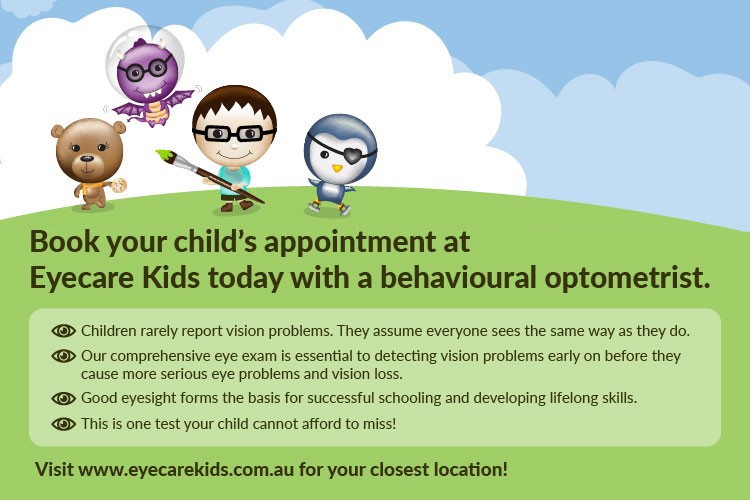A question we often get asked by parents of infants and toddlers is, ‘How can you figure out how my child sees?’
When your child can recognise letters, an optometrist can test their vision using the letter chart. But how about for younger children?
We don’t need input from a child to know how well they are seeing. Here are three ways we can test their eyes even if they can’t read yet:
1. Picture cards

For younger children around age 3, a test similar to the letter chart is used, only this time using pictures or symbols.
We will test if both eyes are working by asking the child to identify symbols or pictures from a given distance or match them with a picture card, moving down until the child hesitates or is unable to correctly identify 4 out of 5 symbols on that line. Their visual acuity (or how well they see from a given distance) is recorded as the last line on which at least 4 of the 5 symbols are identified correctly across the line. We will also test if each eye is working individually by doing the same as above, but with each eye covered.
2. Cyclo drops
Cyclo drops belong to a class of drugs known as cycloplegics. Cycloplegics temporarily relax the focusing muscle inside the eye. Why do we need to do this?
In kids, the focusing muscles of their eyes are very strong. So even if they have a refractive error, they may falsely test 20/20 vision with the eye chart—but only because their focusing muscle is working so hard to see clearly. If they maintain this extra work for minutes or hours, this may cause blurred vision or headaches as the muscles begin to get tired.
Also, there are times when only one eye has a refractive error whilst the other does not. So what happens is the child may claim to see just fine, but actually because they are only using one eye.
What happens when the cyclo drops are placed in the eye is the muscles are temporarily relaxed, and the pupils become dilated (wide open). Without the focusing muscles working, this allows us to determine the true, full prescription in each eye.
3. Retinoscopy
After cyclo drops are placed and the pupils remain in a dilated state, we will perform a retinoscopy in each eye. A retinoscopy is simply shining a light in each eye using a tool called retinoscope to get an objective finding of how the child sees.
We will shine light through the pupil and move the light vertically and horizontally across each eye, observing how the light reflects off the retina (the back portion of the eye). How the light is reflected will determine if the child can see clearly, if they are short-sighted, far-sighted, or have astigmatism. Dilated eyes make it easier for us to see how the light reflects and allows for a more accurate diagnosis.
In conclusion, kids can have an eye test at any age—they don’t need to be able to read or even speak. Our recommendation is for children to have their first comprehensive eye exam at 6 months of age, followed by at age 3 (if there are no underlying visual problems during their first eye test or after that), and just before they enter school. A comprehensive eye test is particularly important if there’s a family history of childhood eye problems such as strabismus (crossed eyes) or amblyopia (lazy eyes).

